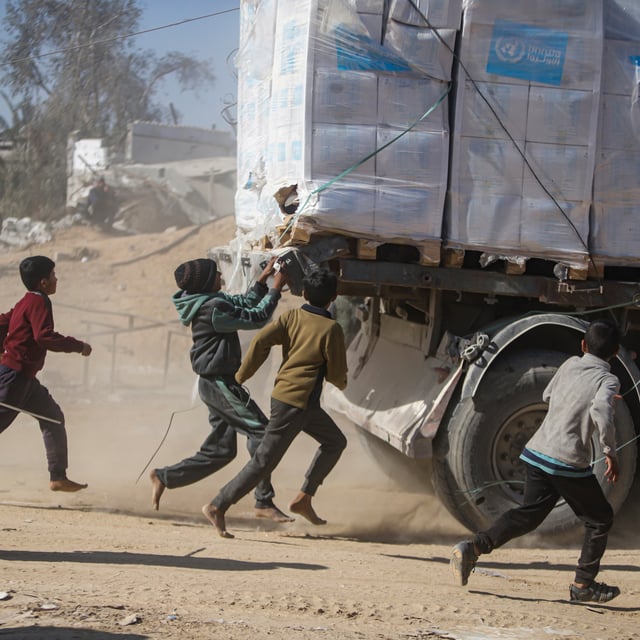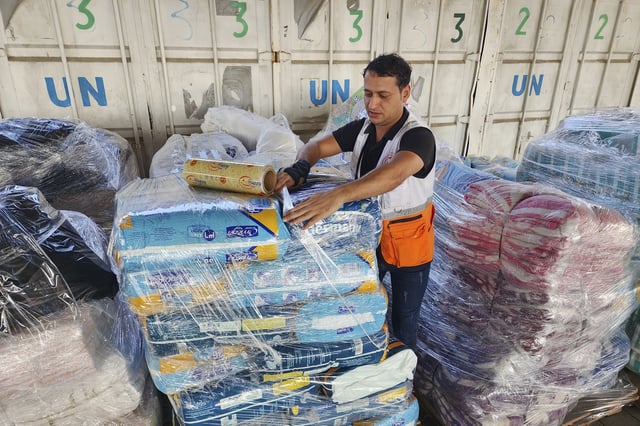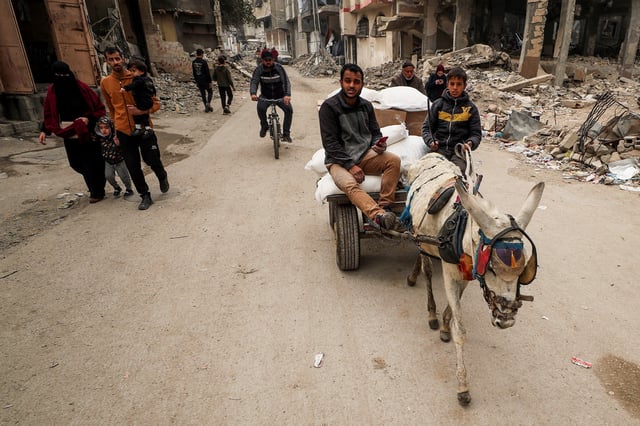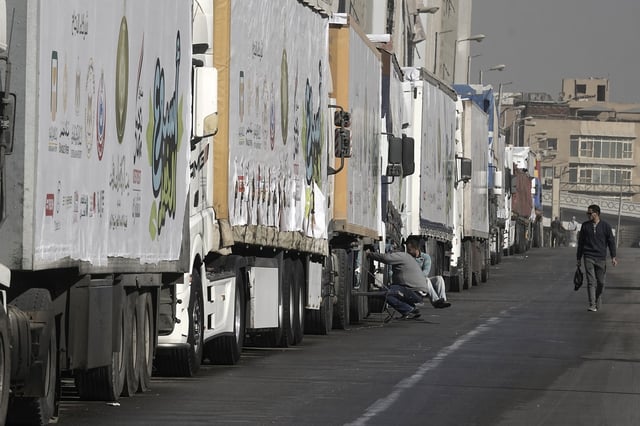Overview
- Over 32,000 metric tons of aid have entered Gaza in the two weeks since the ceasefire, with 600 trucks allowed daily under the agreement.
- Damaged roads and unexploded ordnance from the conflict complicate the safe distribution of humanitarian aid across the territory.
- Food prices, though declining, remain significantly higher than pre-war levels, forcing many families to rely on limited and costly market supplies.
- Essential items like tents, medical supplies, and water infrastructure equipment face delays due to Israeli restrictions on dual-use goods.
- Aid workers report ongoing shortages of shelter, clean water, and fuel, with many families still living in unsafe and unsanitary conditions.



